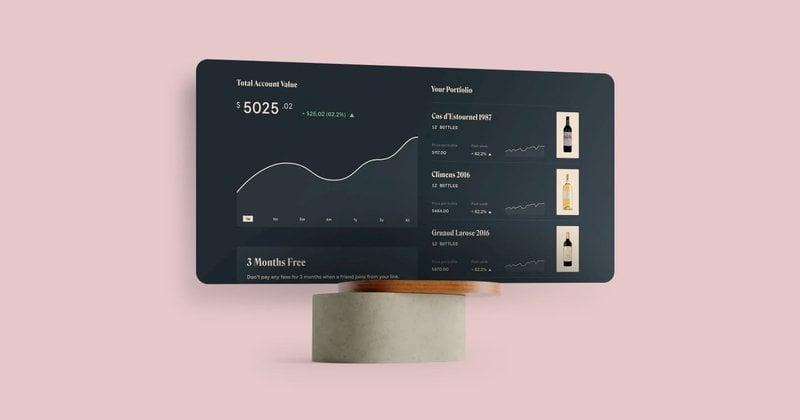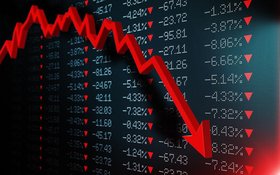Is Securitized Debt The Right Investment For You in 2025?
Securitized debt is essentially a bunch of loans that have been grouped and made into a marketable security backed by the original debts.
Companies do this for various reasons, but investors can benefit too. There’s potential for good returns, and securitized debt can be a good hedge against rising interest rates.
But what is securitized debt, and how does it work?
In this article, we’ll answer those questions and more, including the common types of securitized debt, the pros and cons of investing in securitized debt, and how Vinovest can help you take advantage of an excellent alternative (fine wine!)
Further reading
- Explore the world of Alternative Investments with this in-depth guide.
- Alternatively, check out the differences between investing in Fine Wine and Property.
What Is Securitized Debt?

Debt securitization is the process of converting multiple debts into one marketable security backed by the original obligations. This package is then sold to third-party investors as securities who benefit from the cash flow collected from the underlying debt and redistributed through the new financing.
Generally, most debt securities are made up of loans like mortgages made by banks to their customers. These securities are referred to as mortgage-backed securities. However, a debt-backed security isn’t limited to a mortgage loan.
In theory, any financial asset could be securitized - turned into a tradeable item of value.
However, securitization often occurs with loans and other commercial and consumer debt. This type of security is referred to as an asset backed security.
As an alternative fixed income investment, securitized debt can be attractive. The company doing the securitization can benefit from credit enhancement, thereby lowering interest rates and freeing up capital.
The Process Of Securitization

Creating securitized bonds is an incredibly complex process.
- It begins with the originator (the holder of the assets) selling the assets to another financial institution, often a trust.
- The trust then securitizes the loans and repackages them as a new asset.
- This asset is then sold to investors.
- Often, this new asset is divided into different sections called tranches. These tranches consist of individual assets grouped by certain factors, such as the type of loan, maturity date, interest rate, etc. As such, each tranche offers varying degrees of risk and return.
Those deemed more high risk correlate to higher interest rates paid by less-qualified borrowers. As with most investments, the higher the risk, the greater the potential return, and securitized debt is no different.
- Mortgage backed securities are one of the most common types of securitization. A bank would combine mortgages into one extensive portfolio, which the issuer can then divide based on risk levels before offering it to investors.
- Then, when investors purchase the security, they’re effectively taking the role of the lender, benefitting from the cash flow from the underlying asset. For businesses, securitization helps with credit enhancement. With less liability on their balance sheet, they can underwrite additional loans or pay back an existing debt obligation at a lower interest rate.
The Most Common Types Of Securitized Debt

Although bonds backed by mortgage payments tend to be the most common form of securitized debt, any asset backed by a loan may be securitized. For example, banks may securitize an auto loan backed by a vehicle.
Commercial debt and business loans are two other common types of securitized debt.
Additionally, although things like credit card receivables and a student loan aren’t backed by assets, they are still considered securitized credit. If the debtor defaults on a payment, the bank can repossess the assets.
However, these are referred to as asset-backed securities.
Let’s explore the differences between a mortgage backed security and an asset backed security in more detail.
Mortgage backed securities
A mortgage backed security is one where bonds are secured by a home or real estate loan. Banks pool many of these loans together and sell them to a government agency like Fannie Mae or a securities firm.
Mortgage backed securities can be further broken down into commercial mortgage backed securities and residential mortgage backed securities. The only real difference is that commercial mortgage backed securities are backed by commercial properties like apartment buildings, factories, and hotels.
Residential mortgage backed securities are backed strictly by residential mortgages.
Asset backed securities
Following the near-collapse of the US securitization markets in 2008, the Federal Reserve established the Term Asset-Backed Securities Loan Facility to enable the issuance of asset backed securities.
An asset backed security is created from consumer debt. When someone borrows money like taking out car loans, a student loan, or credit card receivables, banks view these loans as assets. Banks can then sell these assets to a financial institution that issues the bond and makes it available to investors.
Pros And Cons Of Investing In Securitized Debt
Before investing in securitized debt instruments, it’s essential to understand the benefits and drawbacks.
Pros

Here are some of the benefits of investing in securitized debt:
- Potential for high returns: Different securities, and the tranches of those securities, offer varying levels of risk and reward. Additionally, unlike corporate bonds, most securitizations are amortized, meaning investors benefit from repayments over the loan’s term. These loans also differ from a fixed income bond in that most MBS holders receive monthly interest payments.
- Inflation resistant: Securitized debt is an excellent hedge against inflation since most of the debt in this sector is backed by assets. Investing in a consumer loan supported by physical assets like real estate and cars can be a good way of reducing inflation risk since the prices of those assets rise during inflationary periods.
- Diversification: Securitized debt is popular among hedge funds and institutional investors as they tend to be uncorrelated to other bonds and securities.
- Opportunity to invest in specific assets: The securitization process often creates a wide range of high-quality assets. This allows investors to pick from highly-rated assets.
Cons

These are the shortcomings of a securitized debt investment:
- Credit risk: Credit risk is the risk that the debtor defaults on a payment. Although tangible assets back the securities, there’s no guarantee these assets will maintain their value if a debtor defaults on the underlying asset.
- Prepayment risk: Prepayment risk happens when a debtor prematurely pays a part of the principal early. This benefits the debtor as they don’t have to pay interest on that part of the consumer loan. However, for investors, it means they won’t see any interest payments on that portion.
- Complexity: Turning debt into a security is remarkably complicated, which can be even more complex if there is government intervention. By the end of the process, this complexity means it can be tough to properly assess the level of risk involved. For the investor, this means potentially investing in a tranche that doesn’t accurately reflect the risk involved.
- Lack of transparency: Mortgage backed securities got a bad reputation during the subprime crisis of 2007 to 2009. Ahead of the crisis, the quality of the loans underlying the products sold was misrepresented. There was also misleading packaging of debt into further securitized products. While new legislation has since been implemented, it’s something potential investors should be aware of.
With that in mind, let’s consider an alternative asset class to securitized debt instruments.
Fine Wine: A Superb Alternative To Securitized Debt

As an asset class, securitized credit has its benefits. It’s a good hedge against interest rate uncertainty, but it’s an incredibly complicated investment with a bad reputation.
For those looking for an alternative investment offering long-term, stable returns with comparatively lower risk, why not consider fine wine?
Here are a few reasons why investment grade wine is an excellent alternative:
- Diversification: While all alternative assets can help you diversify, wine offers a unique form of diversification since its value is unrelated to economic performance, interest rates, corporate earnings, or investor sentiment.
- Stability: The wine market experiences much lower volatility, remaining remarkably stable when stock and bond markets experience frequent boom and bust cycles.
- Good returns: Wine has the potential to offer outsized returns. In fact, wine has outperformed the Global Equity Index by 1.88% over the last 15 years and delivered annualized returns of 13.6% over the same period.
- Accessibility: Investing in the world’s best wines used to be reserved for the wealthy. Now, thanks to companies like Vinovest, anyone can invest in fine wine.
Vinovest is a wine investment platform that helps you buy, store, and sell fine wine from around the world. Vinovest takes the hassle out of investing, taking care of authenticating, insuring, storing, and selling your wine.
Time To Decide If Securitized Debt Is The Right Investment For You!

For investors looking to diversify, securitized bonds are a strong contender. With the potential for solid returns and the ability to pick and choose, it’s an attractive option. However, investors shouldn’t ignore its complexity and the role securitized debt played in the 2007 financial crisis.
By comparison, investment grade wine offers attractive returns and outstanding stability. And with Vinovest making wine investments easier than ever, there’s no reason not to add this lucrative asset to your portfolio.
Sign up with the platform and start growing your wine collection today!



